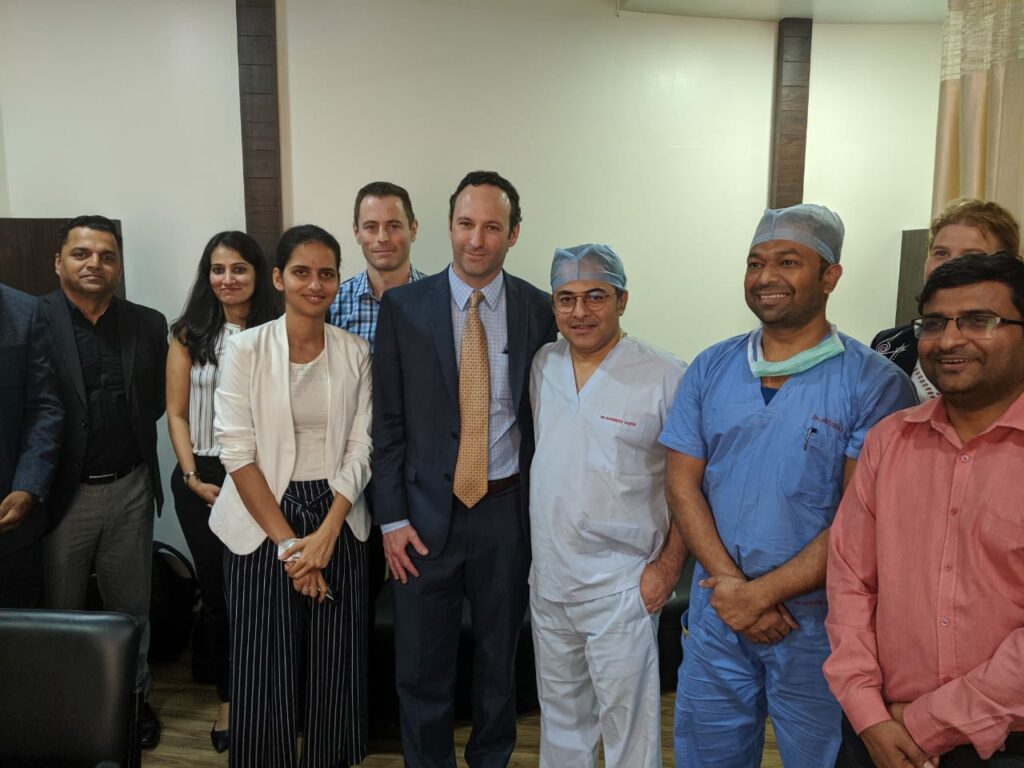Dr Ryan M Nunley Shares His Experiences with City Doctors on Technological Advancements in Wound Closure Management in Joint Replacement Procedures

Pune, October 09, 2019: A three-day training and knowledge sharing program was flagged off in New Delhi on October 2, 2019 by Dr Ryan M Nunley, Associate Professor from Washington University Orthopaedics in St. Louis to educate and equip surgeons with the latest technological advancements in the field of wound closure management. As the incidence of surgical site infections is relatively higher in India compared to rest of the world, the 3-dayprogram gave the potential to highlight the benefits of latest advancementsin the space of wound closure, especially in joint replacement procedures. The training and knowledge sharing programwas planned to increase awareness about soft tissue management with leading surgeons in India across three cities – New Delhi, Hyderabad and Pune.
More than 50Orthopedic surgeons across 3 cities participated and were educated on the technological advancements to improve the treatment process to enable patients with faster mobility, minimum scar, reduced infection, easier self-care and ensure better quality of life. These advanced systems will also provide minimally invasive skin closure techniques that lead to greater patient satisfaction and better cosmesis.
The primary aim of the educational initiative was to highlight the effective use of safe and secure wound closure, as it is critical to avoid the risk of Surgical Site Infections (SSI), which can lead to re-admission and ultimately resulting in higher costs for the healthcare system. In Asia Pacific alone, patients are up to 20 times more likely to acquire a healthcare-associated infection with SSIs. According to the World Health organization more than 1 in 10 patients in low- and middle-income countries will get a surgical site infection. A lack of surveillance and implementation of global guidelines continue to inhibit progress around SSI prevention in Asia Pacific, taking the mortality rate up to 46% in Asia Pacific countries.
Moreover, an SSI infection pertaining to orthopedic surgical procedure can increase the patient’s hospitalization time by up to two weeks and care costs by more than 300%. SSIs in orthopedic procedures also present a stark and catastrophic complication for patients, surgeons and hospital institutions. The SSI range from low to high for Total Knee Replacement (TKR) is 1.74% to 12.5%.
Speaking on this, Dr Ryan M Nunley further added, “One of the biggest challenges with joint replacement surgery across the world is infection. It is one thing that we’ve not been able to eliminate. Hence, adopting technologies which reduces risk of infection is a key goal in all aspects of orthopedic surgical procedures, especially Total Knee and Total Hip Arthroplasty. With latest advancements in wound closure management in joint replacement surgeries, we can meet the changing customer demands and provide better treatment to patients. The last 3 days in India gave us this opportunity to equip surgeons with information and share my experiences with wound closure systems in orthopedic surgeries which are less invasive, have reduced incidence of drainage/hematoma/SSI, provide watertight closure techniques, are easier to remove by patients at the convenience of their own home (less visits back to the clinic which can be expensive and time consuming for the patient and family members), dressings with significantly less pain than staples (skin clips) and provide better cosmesis.”
During orthopaedic surgeries, it is important to pay attention to the management of soft tissue as improper management can lead to pain, drainage, hematomas, infection, readmission or other complications, which can be devastating to patient and the families. Attention to wound closure systems at the time of surgeries increases surgeon’s precision and can positively impact patient’s functionalrecovery, quality of life and patient satisfaction. It will reduce the economic burden on healthcare system andre-hospitalization rates.
Minimizing risk of surgical site infections is possible with attention to the wound both during and post-surgery by surgeons as well as patients. For any medical procedure, improved patient outcome and patient satisfaction is the key goal. It is important to understand that in the case of orthopedic surgeries, the challenges affecting patient leading to dis-satisfaction include the need for more clinic visits to remove staples or sutures, superficial infections, abscess formation, wound dehiscence, prolonged wound discharge, readmission to the hospital, and re-operation. Using wound closure systems that reduce wound healing complications that do not require manual removal by a physician or healthcare provider as a solution will significantly improve patient satisfaction and outcome, as well as reduce the over cost the healthcare system.








